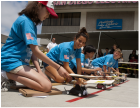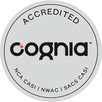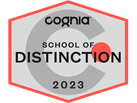IDEAVENTIONS ACADEMY
 Today’s topic is about teaching Engineering as a core curriculum class. We’re walking backwards in S-T-E-M. We started with M - Math and today we’ll focus on the E - Engineering. Anyone who has an engineering degree may say, “Engineering as a class is too broad!” Biomedical Engineering is very different from Computer Engineering and those two fields are very different from Civil Engineering. And, I agree. To set some context, when I talk about the Engineering Design process or cycle, in its simplest form, it is:
The primary goal of our engineering program is to teach kids how to think like engineers so that it becomes second nature to them. In other words, we want kids to learn how to think like the problem solvers of the world. A secondary goal of our engineering program is to teach kids the skills that they need to implement, or create, the solutions that their minds come up with. Finally, we want to expose kids to the variety of engineering disciplines. How will they know if they like it if they don’t know it exists? When I think back to my education at TJ and at MIT, what comes to mind is that I learned how to think and how to solve problems. I can’t remember the specific facts of what I learned in biotech lab or specific dates I learned in humanities. What I do remember was the constant problem solving and learning how to take an ambiguous problem or challenge, structure a solution and execute on it. That skillset (and hard work), the engineering skillset, is what has carried me through in my career and in life in general. With the Next Generation Science Standards, we found that many science curricula now integrate engineering activities. We think that this is great! You may ask, “Do you still need a separate engineering class?” Yes! We think that kids still need a focused engineering class for two reasons:
Science and Engineering (and Math and Computer Science) are very related and are synergistic, but there are different skills and thought process that occur with each (more to come on this philosophy in a separate post). The goal for this class is learning how to come up with solutions and to think like an engineer. In our science classes, the goal for kids will be to learn to question and seek answers like a scientist. We want students that when given a problem, have the confidence, strategies and skills to come up with a solution and not look to someone else to give them the answer or tell them how to do it - which is too often what happens with many children. We selected the two curricula for the initial year because they provide a great introduction to engineering with real-world problems. They also give us challenges that span various engineering disciplines. We will use the Engineering is Elementary (combination of EiE, Engineering Everywhere andEngineering Adventures) for 4th and 5th grade students and It’s About Time's Engineering the Future for 6th and 7th grade students. We can expand or modify them by using different materials to solve the challenges. If cardboard is not sturdy enough, let’s use wood. What is more frustrating than having an idea and not being able to make it real? By teaching kids how to safely use woodworking tools, sewing machines, and 3D printers, among other tools, they will now have the skills with which to implement their solutions. Finally, we round out our engineering curriculum by giving kids the opportunity to solve problems that we need for their local environment. Do we need a sign directing people on where to go? Or to build a wireless weather station to know the temperature outside? That’s a problem to be solved by the kids. Do we need an exhibit for next year’s Nova Maker Faire or US Science and Engineering Festival? Those are challenges to be solved by the kids. As needs arise within our own school community, the lab is a great place to engineer those solutions. Have a great week!
0 Comments
Your comment will be posted after it is approved.
Leave a Reply. |
AuthorJuliana Heitz is co-founder of Ideaventions Academy and is very excited to share the thinking behind the Academy. Archives
October 2023
Categories |
Copyright © 2010-2024| 12340 Pinecrest Road, Reston, Virginia 20191 | 703-860-0211 | admissions@ideaventionsacademy.org | Tax ID 27-2420631 | CEEB Code 470033
 RSS Feed
RSS Feed



